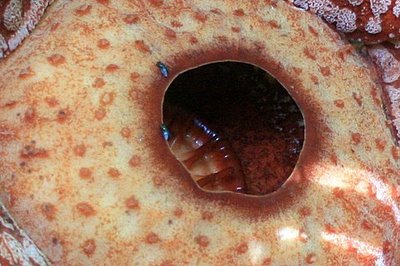
While nearby another R. cantleyi bud patiently prepares for its turn to blossom, some 6 months away.

Remnant of a once-majestic bloom, now a lifeless dull blob. If the plant is male, there is nothing left when he expires.

Another site of a former flower. If female, then out of the decayed mass, another bud arises and blooms in 9 months' time, to perpetuate the species.

The pollinators at work - flies attracted to the pungent odour. Two outside and many more inside the window.

Such is the cycle of life.